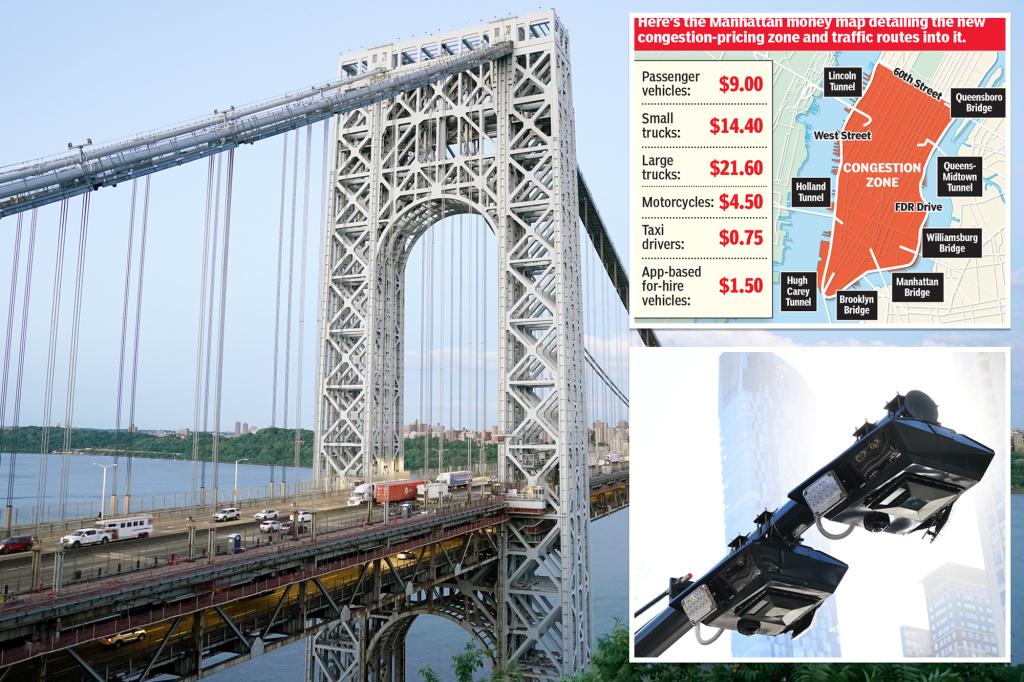The implementation of New York’s congestion pricing plan, a first-in-the-nation initiative aimed at reducing traffic and funding public transit, has ignited a political battle between New York and New Jersey. The plan, spearheaded by New York Governor Kathy Hochul and the Metropolitan Transportation Authority (MTA), involves charging a $9 toll for vehicles entering Manhattan south of 60th Street. While a federal judge in Newark ruled against issuing a preliminary injunction to halt the toll’s commencement on January 5, 2025, the decision also mandated further environmental impact assessments, specifically regarding mitigation measures for New Jersey communities potentially affected by diverted traffic. This ruling has led to conflicting interpretations and pronouncements from both states, with New York declaring a victory and New Jersey claiming a delay in implementation.
The central point of contention revolves around the environmental impact assessment conducted by the MTA and the US Department of Transportation. While Judge Leo Gordon largely sided with the defendants (MTA and USDOT) regarding the thoroughness of the overall assessment, he criticized the lack of specific mitigation measures for New Jersey communities, compared to the detailed provisions outlined for affected areas within New York City. This discrepancy, according to the judge, constitutes an arbitrary and capricious approach. The ruling requires the Federal Highway Administration (FHWA) to address these shortcomings by January 17, potentially influencing the timeline for the toll’s full implementation.
Governor Hochul celebrated the ruling as a significant win for commuters in both states, emphasizing the toll’s reduced cost of $9 compared to the initially proposed $15. She framed the decision as an affirmation of New York’s right to address congestion and invest in public transit, despite New Jersey’s efforts to obstruct the plan. Hochul’s positioning reflects the broader narrative surrounding the congestion pricing plan, which has been touted as a crucial step towards improving New York City’s transportation infrastructure and reducing traffic congestion.
Conversely, New Jersey Governor Phil Murphy interpreted the ruling as a victory for his state, asserting that the mandated remand effectively prevents the MTA from implementing the current congestion pricing proposal on the scheduled date. This stance highlights New Jersey’s concerns about potential negative impacts on its communities, particularly increased traffic and pollution due to diverted vehicles. The differing interpretations of the ruling underscore the political sensitivities surrounding the congestion pricing plan and the ongoing interstate tension regarding its implementation.
The judge’s ruling points to a nuanced understanding of the complexities involved. While acknowledging the necessity of addressing congestion and supporting public transit, the ruling also emphasizes the importance of mitigating potential negative impacts on neighboring communities. The requirement for more detailed environmental mitigation plans for New Jersey communities reflects a broader concern for equitable distribution of benefits and burdens associated with large-scale infrastructure projects. The ruling serves as a reminder that such projects must consider the wider regional context and address potential spillover effects.
This legal battle represents just one chapter in the ongoing saga of congestion pricing. Previous legal challenges, including a lawsuit filed by a coalition of plaintiffs including the United Federation of Teachers and Staten Island Borough President Vito Fossella, were also unsuccessful in blocking the toll’s implementation. With one remaining lawsuit pending in Brooklyn federal court, brought by Hempstead Town Supervisor Don Clavin, the future of the congestion pricing plan remains uncertain. The ongoing legal battles, coupled with the political posturing from both New York and New Jersey, demonstrate the contentious nature of this initiative and the significant challenges involved in implementing such large-scale transportation policies. The ultimate success of the congestion pricing plan will depend on navigating these legal and political hurdles while effectively addressing the concerns of all affected communities.

